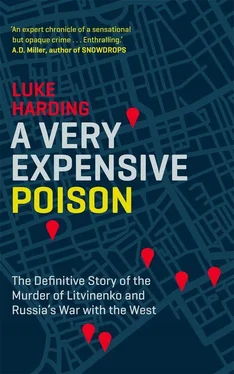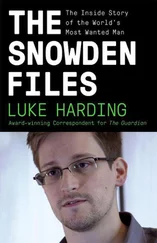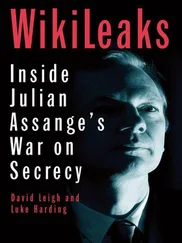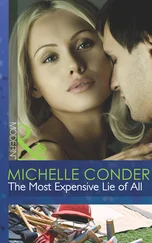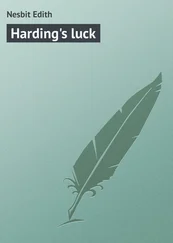But after winning elections in 2010, Yanukovych divided the nation’s assets among his immediate relatives. He built himself a palace on the outskirts of Kiev, Mezhyhirya, complete with a helipad, golf course, pirateship restaurant and a zoo. Sadly, his kangaroos failed to survive the Ukrainian winter.
Yanukovych also dismantled the democratic reforms carried out post-2004. He jailed his chief political rival Yulia Tymoshenko, whose chaotic term as prime minister contributed to Ukraine’s economic and governance mess. Yanukovych suborned parliament and the courts. Political repression grew. He pursued a policy of Russification, which alienated many in the west of the country and fuelled the growth of radical Ukrainian nationalism.
Nayem’s Maidan protest went through several iterations. For weeks it was peaceful. Then, the government used brutal force. This was counter-productive: the demonstrators grew. By February 2014, the mood in Kiev was angry and febrile. Prominent anti-government activists were disappearing; some turned up dead; others alive but showing signs of torture. Titushki – paid government thugs – roamed the streets, beating and killing. Crowds of protesters built barricades. The riot police fired teargas.
As the analyst Andrew Wilson put it, the uprising was a curious concoction of a revolution. It was the anti-Soviet rebellion that failed to happen when Ukraine got independence from the Soviet Union in 1991; a lot of Lenin statues were pulled down. It was also an Occupy-style protest and a Cossack rebellion. Much of it was strikingly retro. Protesters donned homemade shields and helmets. They hurled cobblestones and Molotov cocktails. There was a medieval-style catapult.
In the last hours of the regime, government snipers killed dozens. Video footage shows them firing on unarmed protesters trying to advance across open ground. Eleven police died too. Yanukovych was at his palace in the outskirts of Kiev. He was in no physical danger but chose to escape. He took $32 billion with him (having looted an estimated $100 billion in four years), leaving by helicopter and fleeing to Russia. Other members of his government ran away too, stuffing money and jewels in their hand luggage, like comedy gangsters.
Over the coming weeks and months, Putin would describe the uprising in Ukraine as a ‘fascist coup’. According to the Kremlin, dark right-wing forces seized power in Kiev, with the support of the US and European governments. In turn, Putin said, Moscow was forced to ‘protect’ Ukraine’s ethnic Russian minority from nationalist, ‘neo-Nazi’ attack.
As it turned out, the real coup took place not in Kiev but in Crimea. A week after Yanukovych’s exit, masked gunmen seized the regional parliament building in Simferopol, Crimea’s regional capital. Some of the gunmen were the same Berkut snipers responsible for shooting dead protesters on the streets of Kiev, now fleeing arrest. Others were Russian special forces. A vote of deputies took place while men with Kalashnikovs guarded the entrance. Sergey Aksyonov, a pro-Russian politician whose party won a paltry 4 per cent of the vote in 2010, became Crimea’s PM.
Meanwhile, Russian troops seized key installations. They encircled garrisons of Ukrainian soldiers, leaving them little choice but to surrender. Putin initially denied that these mysterious armed individuals – nicknamed ‘polite little green men’ – were undercover Russian forces. He later admitted that he’d been lying to the international community all along. A hastily arranged ‘referendum’ confirmed Crimea’s secession from Ukraine. In March, Putin annexed the territory.
The immediate big losers were Crimea’s Tartars. The Tartars – whose claim to the peninsula long pre-dates Russia’s – snubbed the referendum and supported Kiev. Russia’s state media promptly cast them as pro-Ukrainian fifth columnists. The Kremlin banned the Tartar leader Mustafa Dzhemilev from Crimean territory; young Tartars began disappearing and turning up dead. It was depressing and familiar stuff: the modern persecution of an ethnic group deported by Stalin.
The threat to Crimea from ‘neo-Nazis’ was a Kremlin fiction, a rationale for a Crimea invasion plan cooked up long before. The far right did play a role in the Kiev uprising – but a minor one. The movement against Yanukovych was broad-based. It involved all sections of society. There were nationalists and liberals, socialists and libertarians, atheists and believers. There were workers from the provinces, as well as IT geeks from Kiev more at home with MacBooks than Molotovs.
The protesters who died were a diverse bunch. The first was an ethnic Armenian; another Russian. One was Joseph Schilling, a 61-year-old builder from western Ukraine, who was shot in the head by a sniper while standing beneath the neoclassical October Palace. Schilling was one of 102 civilians who perished. He was Jewish. The main synagogue in Kiev is a few hundred metres from the Maidan. It was untouched. Ukraine’s chief rabbi, Moshe Reuven Azman, told me there was no evidence of an anti-Semitic backlash.
In the days after the revolution, the far right camped out at the bottom of the Maidan in the four-star Hotel Dnipro. This was the headquarters of Pravy Sektor. Pravy Sektor – ‘Right Sector’ – was an ultra-nationalist organisation. Its deputy leader, Andriy Tarasenko, refused to talk in Russian – universally understood in Ukraine. Speaking in Ukrainian, which I struggled to understand, he said his party didn’t want to be involved in post-revolutionary parliamentary politics. Was he a fascist? ‘Putin is the fascist. He’s the occupier,’ he replied.
I arrived in Kiev as Russian troops swarmed over Crimea. I took a taxi out to the city’s high-rise suburbs to meet Olexiy Haran, a professor of politics and a member of the Maidan’s organising committee. Haran looked exhausted and strung out. He was a prominent opponent of the Yanukovych regime. It had been a scary few months. The professor took a hammer with him to protests on the Maidan, as well as an orange helmet and a gas mask.
A group of academics, including Haran, had signed a letter complaining of a ‘dangerous tendency’ to distort what happened during the revolution. Reports exaggerating the role of ultra-nationalist actors ended up serving ‘Russian imperialism’, they said. Haran expressed frustration that the Kremlin’s ‘fascist’ trope had taken root in some western minds. ‘I’ve had liberal Harvard professors asking me about this. We are talking traditional Russian propaganda,’ he told me.
The fast-moving events of the previous three months had been about ‘national liberation’, he argued – a movement against corruption and in favour of decency and the rule of law. Those who took part formed a confusing mosaic. They had different backgrounds and motivations. The protesters turned violent only in response to increasing police ferocity and the radicalisation of Yanukovych’s regime, the professor said.
In May 2014, Petro Poroshenko, a self-made businessman who owned a chocolate factory in Russia, won Ukraine’s presidential election. Poroshenko was an early Maidan supporter who stood on the barricades. Intelligent, decent, and with an increasingly haunted appearance in office, Poroshenko was probably the best candidate for the job. Pravy Sektor, meanwhile, failed to emerge as a serious political force. Its leader Dmytro Yarosh got 0.7 per cent of the vote.
There was a better critique of Ukraine’s new pro-western leaders: that they came from the same political class that had failed Ukraine before. The oligarchs, the country’s shadow rulers, still controlled huge chunks of the economy and its industrial assets. Meanwhile, the Russian-speaking east of the country – Yanukovych’s heartland – was under-represented. His former ruling Party of Regions disavowed its leader and went into opposition.
Читать дальше
